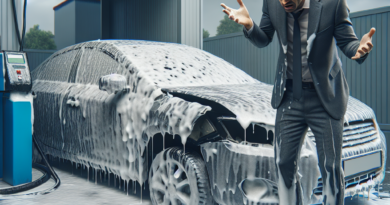When they can take your car away (and how to get it back)
The Highway Code provides various types of sanctions for drivers who do not respect the rules, including fines, suspension or revocation of the license, deduction of points from it and confiscation of the vehicle.
That's not all, when the contravention constitutes a crime, arrest or imprisonment is foreseen.
Then there is the forced removal of the vehicle, which in reality is not a real sanction (in fact it is accompanied by a fine) since it has the aim of restoring public order and removing the vehicle from the point where it is annoying or creating danger.
Nonetheless, having your car towed away is always a great source of inconvenience.
First, there is the apprehension of not finding it where it was parked and the need to track it down.
Secondly, if certain requirements are not met, it is not possible to take it back and use it.
Not to mention that if a vehicle is taken away with a tow truck because it is in the way, the expense borne by the driver rises considerably compared to the financial penalty alone.
Obviously, avoiding these problems is simple, just don't park – even for a short time – your vehicle improperly, but first you need to know when they can take the car away and above all how to get it back in the event that it is removed.
When they can take your car away The forced removal of a vehicle is provided for by the Highway Code as an accessory sanction to the violation of parking or stopping restrictions.
At the same time, its main utility is not the punitive intent, which is ensured primarily by the fine, but rather the protection of the rights of others and road safety.
This does not mean that forced removal is in fact a very strong deterrent from repeating the violation, considering the inconvenience and expense caused.
As anticipated, the car can be taken away when it is prohibited from parking and/or stopping, that is: in areas where the ban has been promoted by the body owning the road due to the danger to road traffic and where there is the appropriate signal; left side of one-way urban streets, without leaving at least 3 meters of width for the transit of a row of vehicles; at or near level crossings, railway or tram line tracks; tunnels, overpasses, underpasses, arches and porticoes (unless otherwise indicated); on bumps and curves (even near them in residential areas and on urban roads); near and in correspondence with vertical road signs and traffic lights, hiding them; in correspondence with the horizontal pre-selection signs and along the canalization lanes; on correspondence and in the vicinity of intersection areas, outside inhabited centers; at or less than 5 meters from an intersection in residential areas, unless otherwise indicated; on pedestrian passages and crossings; on passages for cyclists, on cycle paths or at their outlets; on sidewalks, except for reported exceptions; spaces reserved for parking, stopping or charging electric vehicles; exit of driveways; in the second row or in any position that prevents other vehicles from accessing or moving; spaces reserved for the parking and stopping of buses, trolleybuses and rail vehicles, taking into account the signals or, in their absence, the 30 meters of space with the stop pole in the centre; spaces reserved for taxis; areas intended for the market; spaces reserved for loading and unloading; docks (unless otherwise indicated); spaces reserved for stopping and parking vehicles for disabled people; in correspondence with the slides, the connections between sidewalks, ramps, transit corridors and the roadway for disabled vehicles; lanes and carriageways dedicated to public transport; urban pedestrian areas; limited traffic zones (except for authorized vehicles); spaces for systems and equipment for emergency services and public hygiene; in front of the bins; at the fuel dispensers (5 meters before and 5 meters after the dispensing devices) limited to the hours of service; inhabited centers where parking for trailers detached from the towing vehicle is prohibited, unless otherwise indicated; ban imposed by the body that owns the road for maintenance and cleaning reasons.
Finally, the forced removal of the vehicle is generally permitted when the vehicle constitutes a danger or obstruction to traffic, as well as in cases where the police can assume that it has been abandoned.
In any case, vehicles intended for the transport of disabled people cannot be removed, but only moved to the nearest and most suitable area (in this case you still pay the fine, in addition to the intervention and transport costs).
read also Highway Code Reform, the most important news How to take back the vehicle that has been removed from the tow truck The forced removal of the vehicle can be arranged by the police force but also by persons appointed by the body that owns the road and who hold a regular license .
The contravention can be detected independently or after reporting from other citizens.
After the authorized parties commission a tow truck (which complies with the requirements established by the Regulation implementing the Highway Code) the vehicle is then removed and transported to a municipal depot or in any case an agreement with the Municipality.
You must therefore contact the local police headquarters, indicate the vehicle details and the place where it was left, to obtain confirmation of the forced removal and find out where the deposit is located.
The owner of the car (or a person delegated by him) equipped with an identification document, registration document and insurance certificate, will then have to go to the depot to get the vehicle back, but only after having paid the fine for the fine and the costs.
of intervention, removal and custody.
The latter are normally between 150 and 200 euros + VAT, but a lot depends on the type of vehicle and the circumstances of removal.
Furthermore, if the fact is discovered before the vehicle is taken away, it is possible to stop the removal immediately, paying the costs and the fine at the same time and obtaining the payment receipt.
It is preferable to make the payment as soon as possible, also because this avoids the increase in custody costs and you can take advantage – if the violation allows it – of the reduction of the sanction.
In any case, you have 60 days to pay the fine from notification of the fine and, from the same moment, 180 days to collect the vehicle.
Otherwise the vehicle is sold at auction and the proceeds go to cover the costs of removal (any surplus is the responsibility of the owner) or, if this is not convenient, demolished, with the related costs borne by the owner.
It is however possible to appeal to the Prefect against the forced removal of the vehicle, if it is believed that it occurred unfairly.
read also How to find out if you have received a fine




